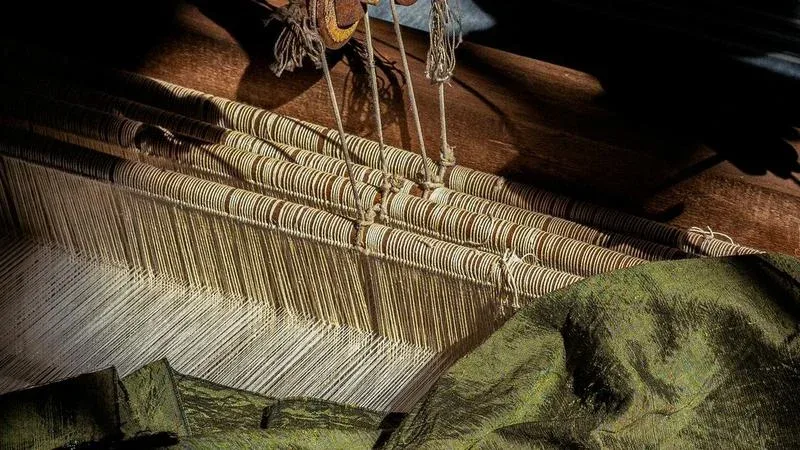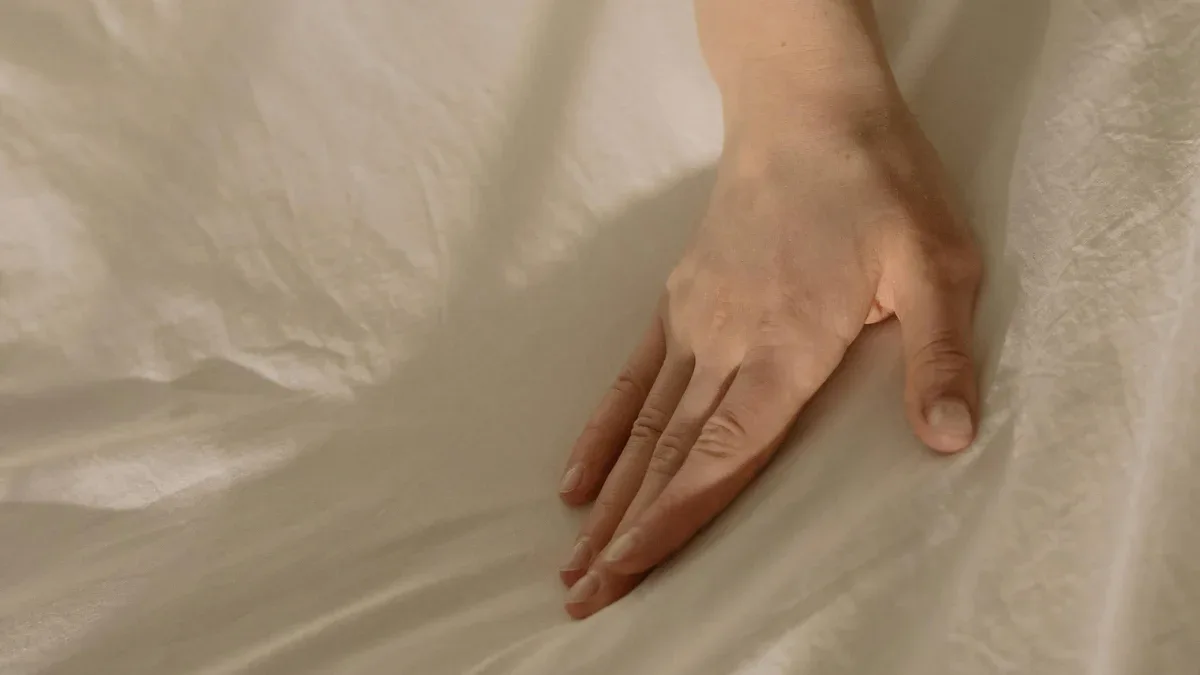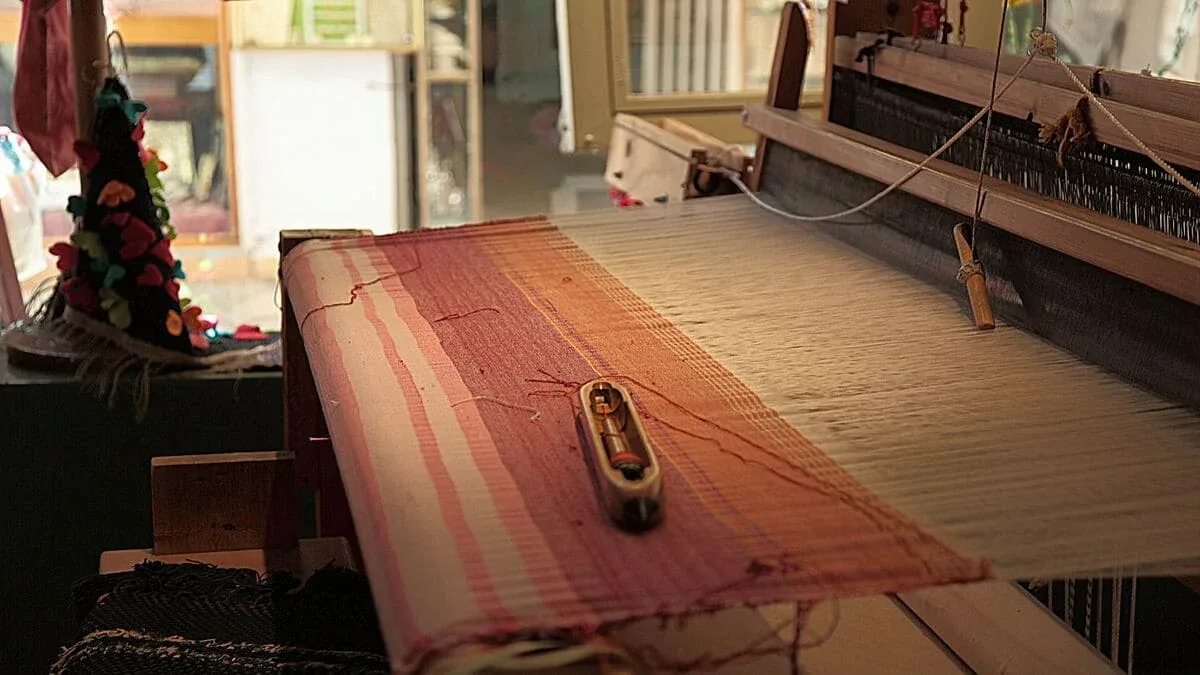Indian textiles have always been centered around weaving. It narrates tales of culture, expertise and custom. In case we want to fully appreciate such fabrics as sarees, dupattas, or even plain cotton cloth, we should understand the process of weaving. The look, strength and beauty of handmade textiles and woven Indian textiles are determined by the types of weaves. Through them, we also get to know how the Indian textile industry and the Indian textile manufacturers continue to practice these ancient skills.
The base of weaving in Indian textiles
Weaving refers to interweaving two groups of threads: the warp, which runs perpendicular to the weft. The pattern and texture of the cloth depend on the manner in which they are crossed. The process generates various kinds of weaves. Weaving is an ancient art in India. It is still relevant today to the Indian textiles industry, both handmade and machine production still flourish. The Indian textile manufacturers are big contributors to ensuring that tradition is upheld whilst addressing the needs of the present.
Plain weave: The simplest structure in different textiles of India
The simplest one is plain weave. In this case, every weft thread over crosses one warp thread, then under crosses the next and so on. It creates a good and plain cloth. A number of cotton fabrics, muslins, khadi and daily dress material are produced in this manner. Dyeing, printing or decorating it is simple due to its flat surface. Most of the handmade textiles employ this as a foundation prior to applying embroidery or design.
Twill and satin: Adding depth and shine
Twill weave is slightly varied in thread arrangement and gives the fabric the appearance of diagonals. This renders it tough, supple and trendy. Twill features can be seen in denim, gabardine, and a lot of Indian dress materials. Satin weave does not work that way. It permits longer floating strings, which make the surface smooth and shiny. Even though satin is luxurious and shiny, it is easier to wear than twill. These weaves provide woven fabrics of India with a greater range of options.
Dobby and leno: For patterns and lightness
Certain materials require designs that are incorporated. This is made possible using dobby weave. It is capable of creating minute patterns or textures directly in the cloth using special looms. Leno weave, however, involves wrapping strings of warp around the weft so that they are interlocked and create open and porous forms. It applies to light fabrics such as scarves, dupattas or net curtains. These styles provide textiles of India with functionality and attractiveness.
Jacquard weave: Designs woven into the fabric
Jacquard weaving is the finest in weaves. In this process, each individual thread in the warp is able to be raised individually. This enables either intricate motifs, such as floral designs, figures, or large motifs, to be directly printed onto the fabric, in addition to being printed onto it. Jacquard weave is used in brocade sarees, damask, and most luxury fabrics. It is more time-consuming and difficult, but the outcomes are marvelous, and the cloth can become one of the treasures.
Choosing the right weave in the Indian context
Every weave is associated with its advantages and constraints. Plain weave is plain and strong, twill is powerful and elegant, satin is shiny, dobby provides subtle ornamentation, and jacquard provides affluent and detailed designs. In India, the textile manufacturers determine what type of weave they can apply based on the cost, style, and intention. The work and efforts of the weavers are also determinants of the end shapes in the hand-made textiles. This is why there is so much variety in types of textiles in India, a combination of tradition and modern demand.
The knowledge of various weaves, starting with plain and twill, dobby, satin, and jacquard fabrics, makes us perceive the fabrics differently. It demonstrates the manner in which a design is created, the reason why a certain texture is more or less tactile, and what makes a piece of textile powerful or comfortable. The Indian textile industry has been preserving knowledge, and the craft textile industry emphasises the hard work and dedication of the skilled weavers. Indian woven textiles are not merely a piece of cloth, but a culture with every thread of it.
Svarna continues this legacy. By producing handmade textiles with both care and creativity, they balance tradition with innovation, offering fabrics that connect heritage with modern living.
FAQs
1. What are the different types of weaves in Indian textiles?
They include plain weave, twill, satin, dobby, leno, and jacquard.
2. How do handmade textiles differ from machine-made fabrics in India?
Handmade textiles are crafted by skilled weavers, while machine-made fabrics are produced in bulk.
3. Why is understanding types of textiles in India important?
It helps appreciate the quality, design, and the diversity of woven textiles of India.



